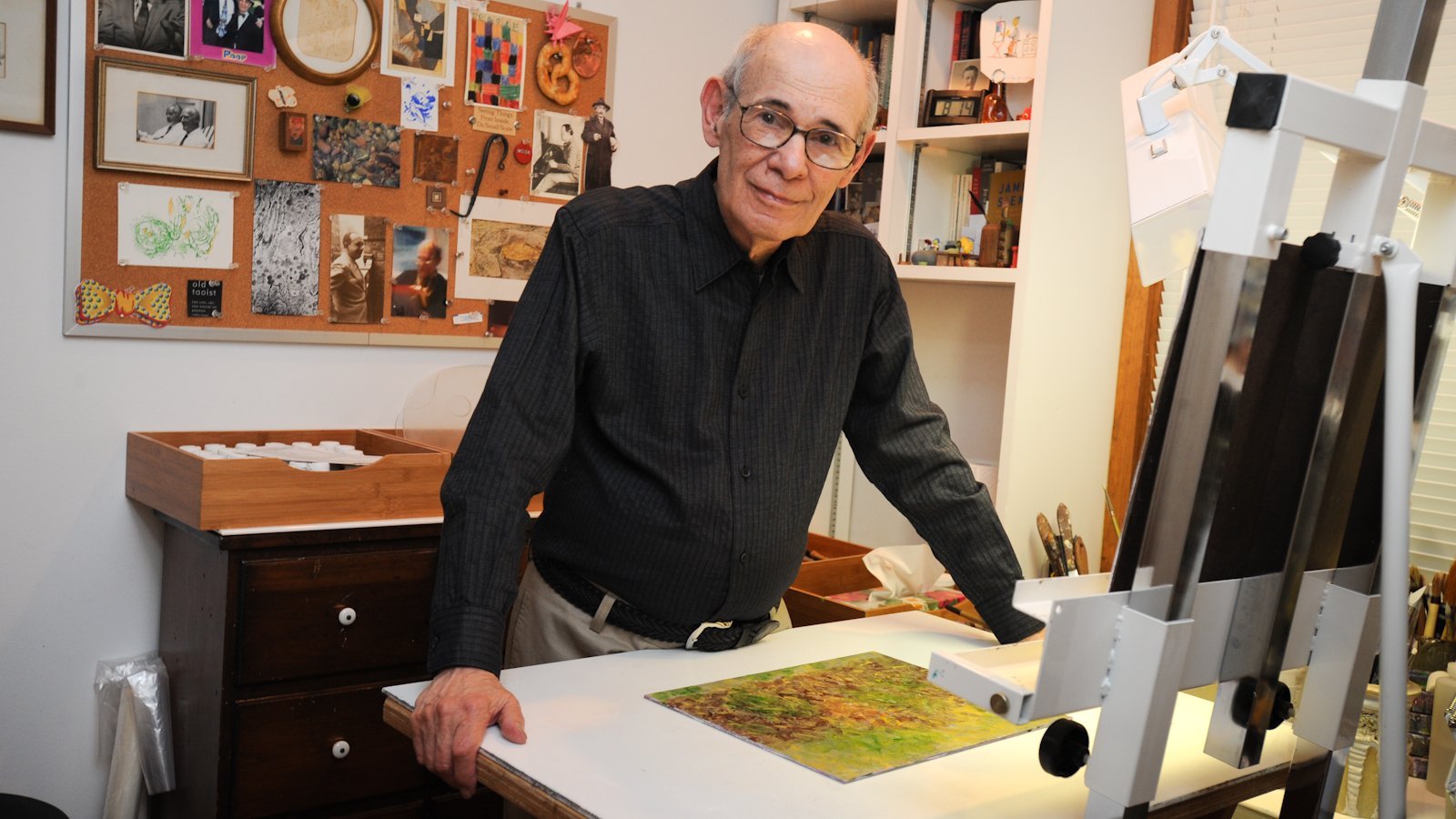Charles Seliger was an American artist whose works explored the structure, complexity and order of nature. Born on June 3, 1926, Seliger painted until his passing on October 1, 2009.
Much has been written about Charles Seliger, including essays in show catalogs and museum exhibits as well as in books. His works were the subject of a PhD thesis, and many details of his life, thoughts, and observations are captured in journals that he began in 1954. Those journals are now part of the permanent collection of the Morgan Library & Museum.
Seliger did not lead the life often associated with artists, especially the Abstract Expressionists that were his contemporaries in the 1940's and 50's. A family man, and a working man, Seliger was married for 27 years to Ruth Lewin, also an artist, until she passed in 1975. Together they raised two sons in suburban Mt. Vernon, New York.
During that time and for many years afterwards, Seliger worked for a local company, Commercial Decal, which had developed specialized printing methods. This included decals that could be applied to and then fired on ceramic ware, and a means to print lenticular images that appeared to move, as well as images that appeared in 3D.
Seliger's role at Commercial Decal was to oversee the company's design capabilities. This enabled Seliger to work closely with an eclectic and extremely talented group of in-house and freelance artists. His work at Commercial Decal also created unusual opportunities, such as spending a day with the Rolling Stones, who visited Commercial Decal in order to photograph the 3D cover for their 1967 Their Satanic Majesties Request album.
After Ruth's passing, Seliger married Lenore Klebanow. Now that his children were grown, with Lenore he was able to focus more time on his art and career. This included transitioning from the Willard Gallery to the Andrew Crispo Gallery, and then to the Gallery Schlesinger-Boisante, and eventually to the Michael Rosenfeld Gallery who represented Seliger until shortly after his passing.
Over his seventy years as an artist, Seliger's paintings were acquired by numerous museums and private collectors. Shows of his work were mounted approximately every other year. Collaborations were forged with scientists, such as Noble laureate chemist Roald Hoffman, for whom Seliger illustrated a book of poems, and Jazz bassist Charlie Haden, for whom Seliger illustrated an album.
Seliger’s first solo show, at the age of nineteen, was at Peggy Guggenheim's Art of This Century, which in addition to Seliger represented Jackson Pollack, Mark Rothko, and other members of the original New York Abstract Expressionists. Two years later the Museum of Modern Art acquired one of Seliger’s paintings. His last show, posthumous in 2012, was exhibited at the Mint Museum in Charlotte, North Carolina, the Peggy Guggenheim Collection in Venice, Italy, and the Munson-Williams-Proctor Arts Institute in Utica, New York.
While often classified as an Abstract Expressionist, it is an approximation at best to attempt to classify Seliger as part of any one movement or school. The scale of his work is intimate, the details are intense, and the time it took him to complete a work was protracted. Seliger could just as easily be classified as a Surrealist or a Persian Miniaturist.


